Nina+Co uses salvaged materials and biotextiles for Big Beauty’s first store
Nina+Co uses salvaged materials and textiles for Big Beauty’s first store
According to Nina+Co founder Nina Woodcroft, every material choice was aimed at minimizing waste or reviving waste products.
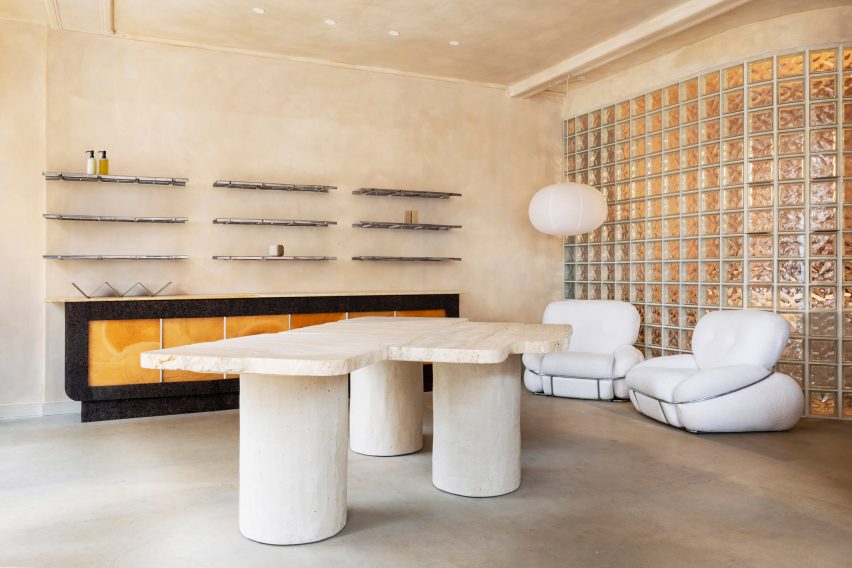
“Lisa was determined to push the boundaries of material use and circularity and is willing to take risks, which is necessary when experimenting with materials and processes that are new,” she told Dezeen.
“There are many great materials and solutions that we desperately need to become mainstream, but making them commercially viable can be a slow and long-winded process,” she continued.
“The goal at Nina+Co is to bridge this gap, to show how beautiful and useful these materials and processes can be, and to work on changing attitudes towards waste and considering end-of-use.”
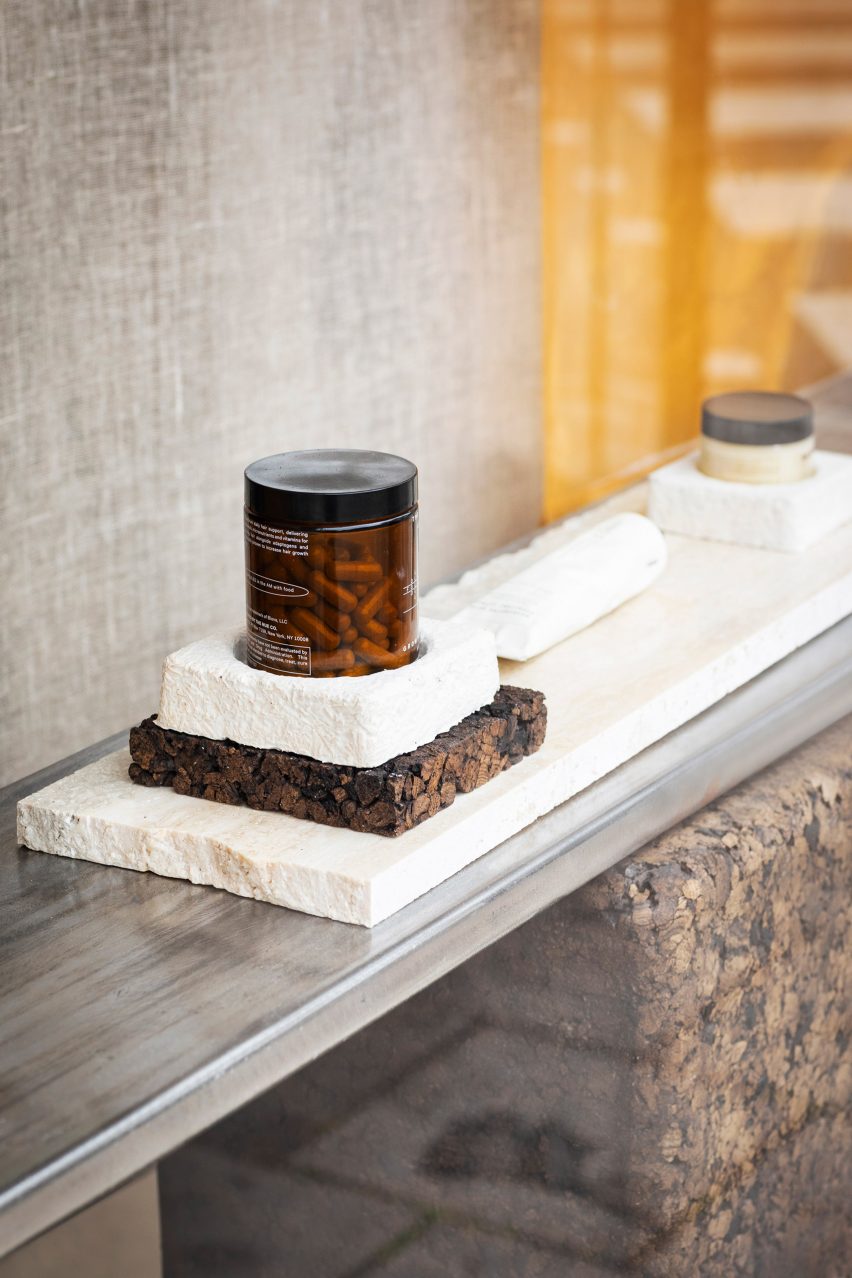
Raw stone edges, metal patination, and earthy tones were blended with soft, oversized, rounded forms to create a calming effect throughout the space where, besides the retail area, there is a private treatment room for massages and facials.
The main space was designed to be flexible and host events, with seating arranged around a large travertine stone table, which was sourced 50 percent from salvage and 50 percent from offcuts.
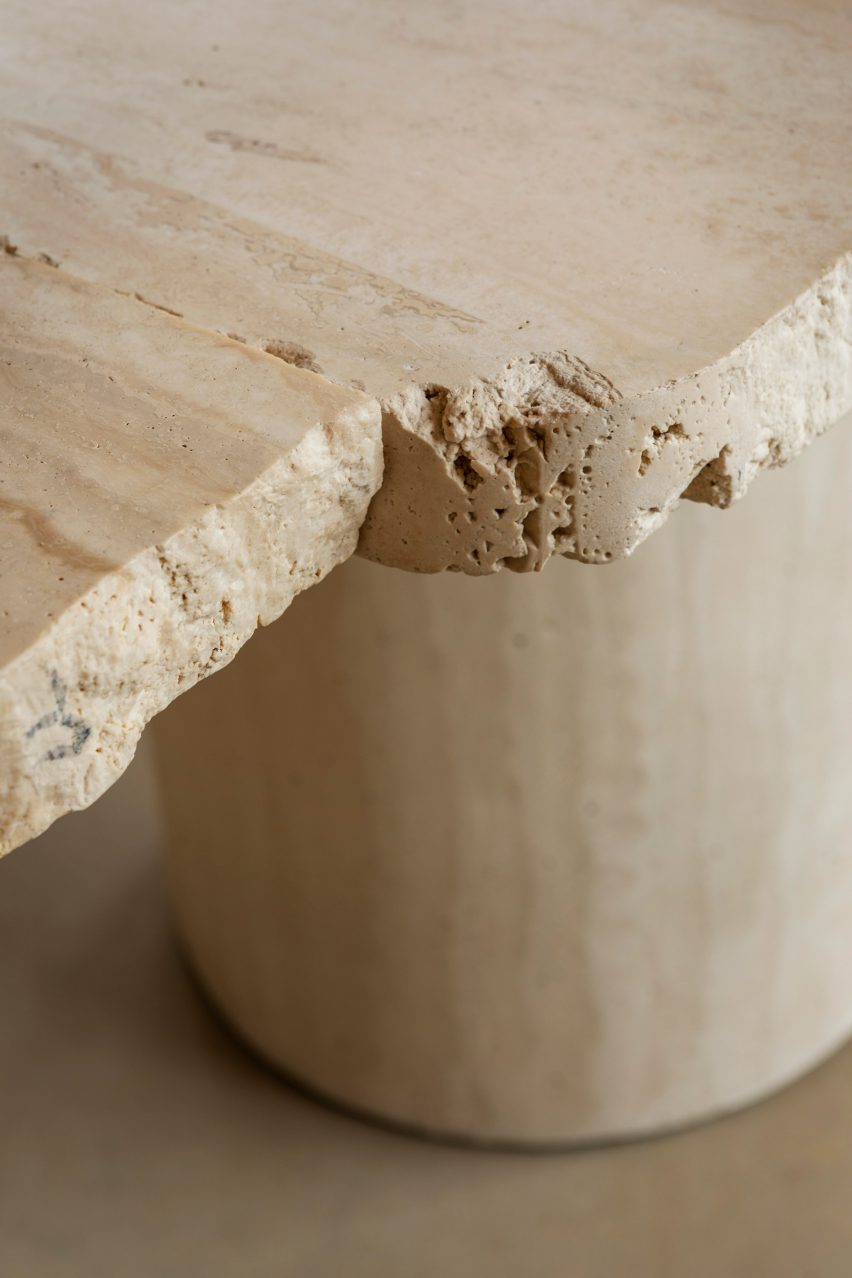
The travertine used for the central table was kept in the large slabs in which it was found, with only minimal shaping to some edges, in a bid to reduce wastage and retain integrity for future applications.
As well as the reclaimed natural stone, Nina+Co used expanded cork blocks that were shaped into storage units and salvaged steel, which has been reworked into shelving.
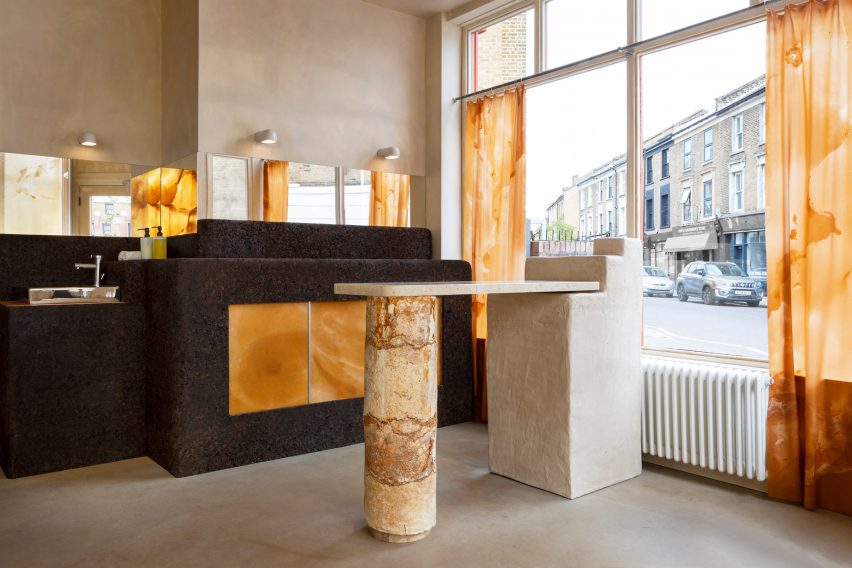
Many of the materials chosen were informed by the minerals and ingredients used in natural skincare. Such as clay, seaweed, and mushroom extracts.
Mycelium was grown to form plinths and legs using the reishi species. Reishi mushrooms and clay were also used to pigment curtains of a seaweed textile. They have tiny trapped air bubbles to look like sea foam or bath bubbles.
The seaweed textile, along with hemp fabric, was hung as a backdrop for the window display that shades the interior.
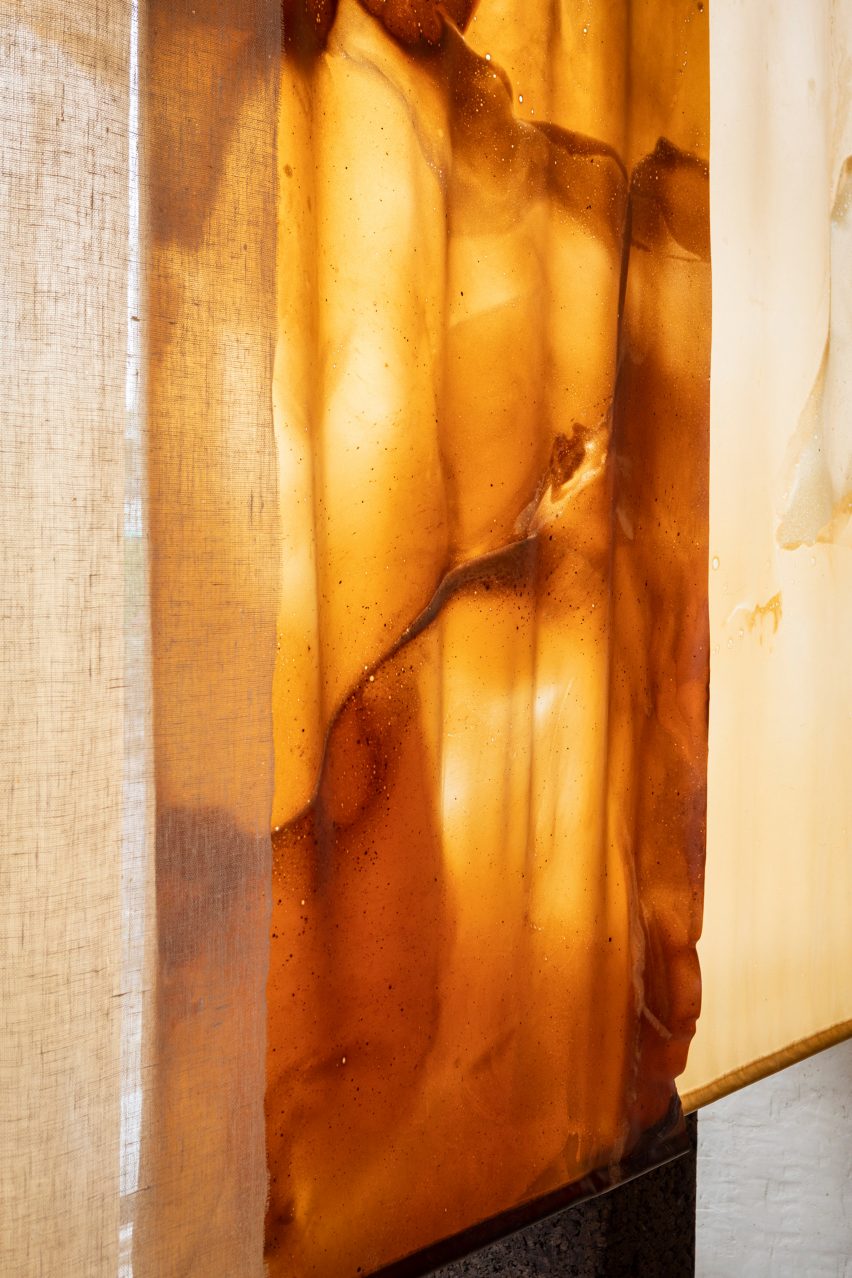
When asked about the challenges of working with mycelium, Woodcroft said “Every project has its hiccups. Mycelium needs precise conditions to grow and contamination is tricky to avoid without serious lab facilities.”
“We inoculate organic waste with mushroom spores then the fungus digests the substrate and binds together with tiny hyphae threads into a homogenous form within a mold; when gently dried, the mycelium becomes inert and we are left with strong, organic pieces of furniture that are ultimately compostable,” she explained.
“There’s so much more to explore with mycelium and I intend to.”
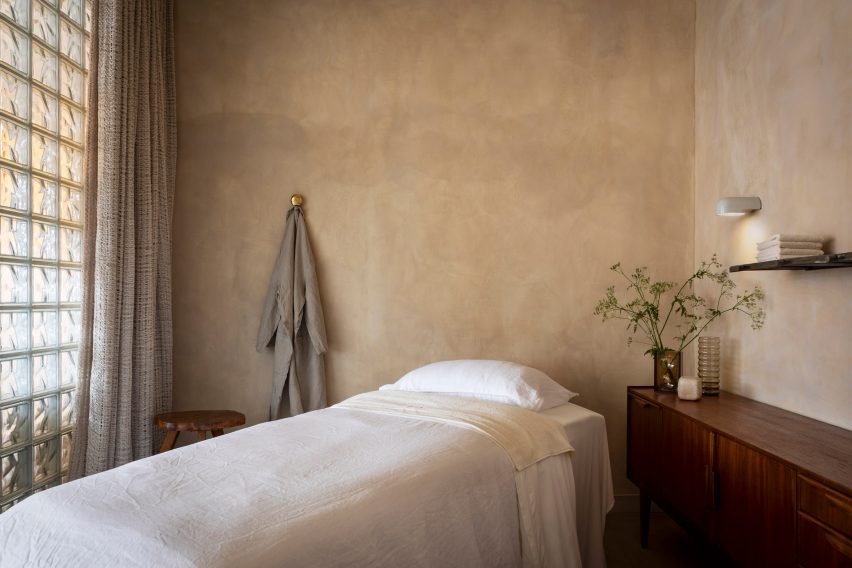
Also as part of the renovation, the studio removed the existing timber floor and underlay. They were both sold locally with proceeds going to charity.
The grey concrete beneath was then stained to a warmer brown using iron sulfate, a common grass fertilizer. Cork tiles with a natural hard wax finish were used for the kitchen and toilet. The walls and ceiling were coated with limewash paint made from clay, minerals, and natural pigments.
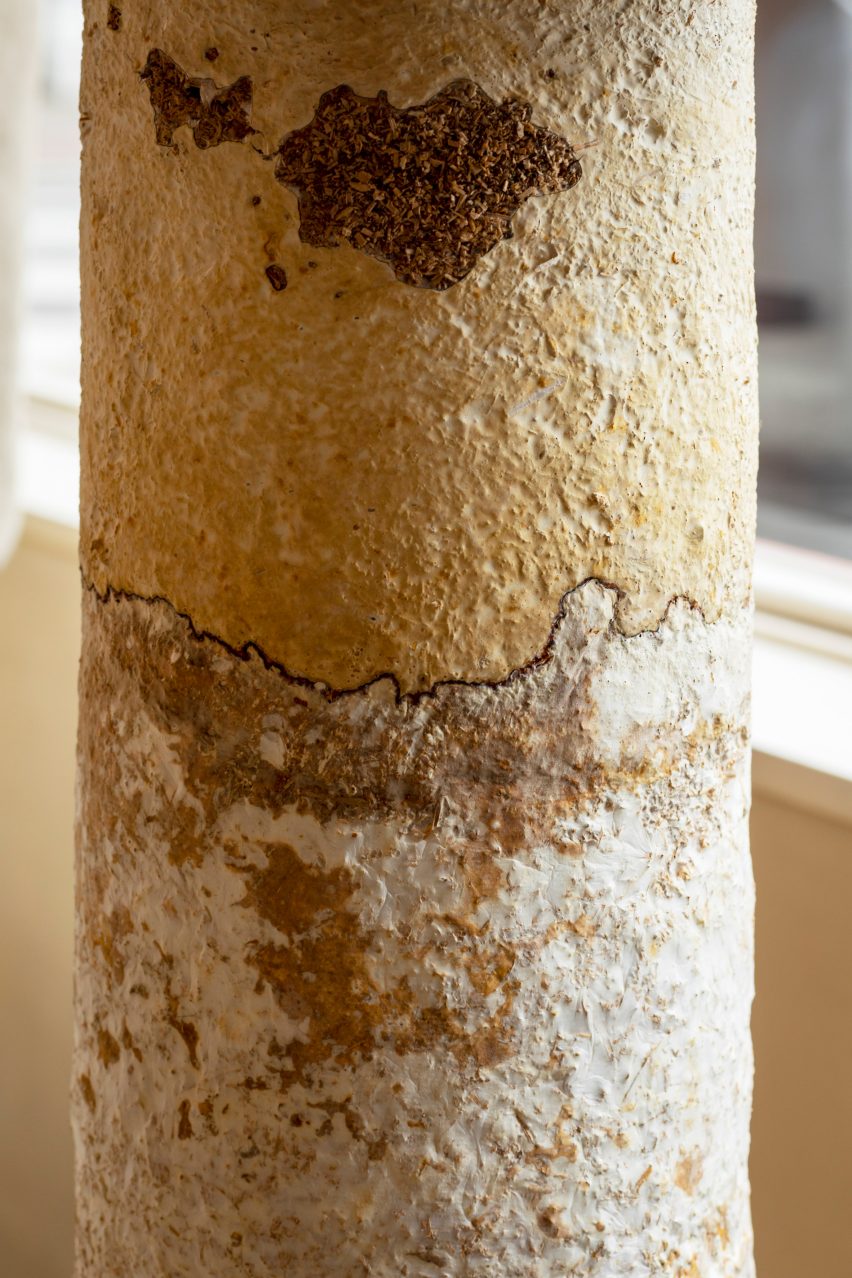
According to Woodcroft, each area of the shop tells a story of material exploration and experimentation.
The space offers “a sense of provenance, connection, and reverence” for the natural components of skincare products on the shelves.
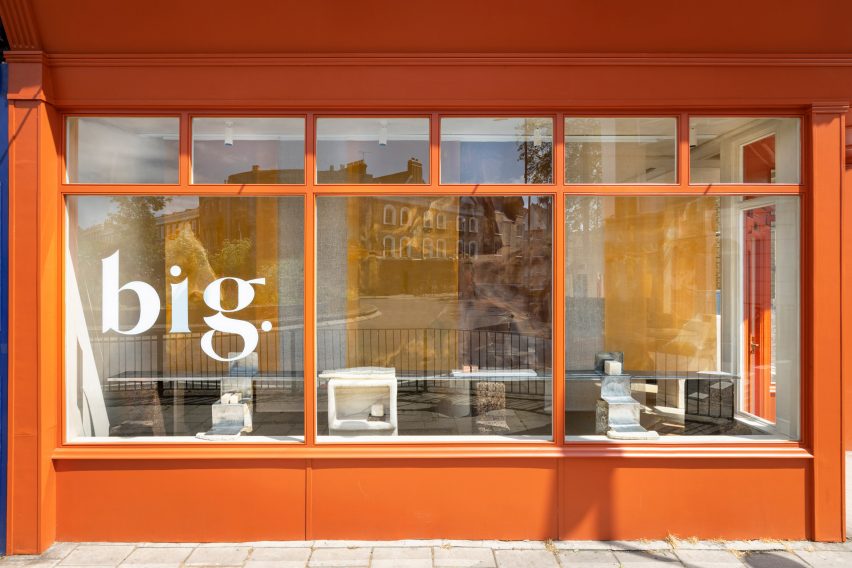
Finally, Read more on Archup:







